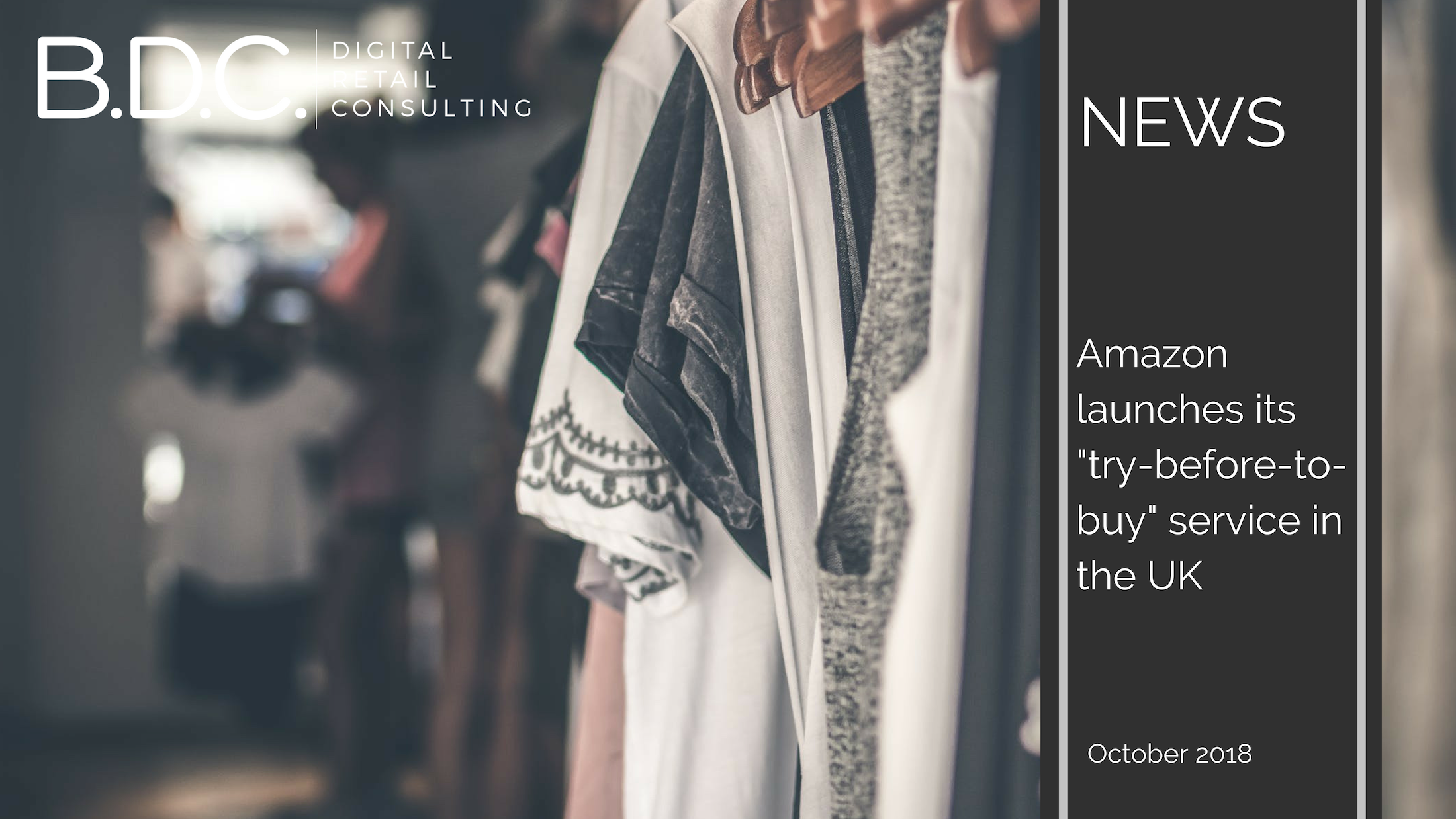
01 Nov Amazon launches “try-before-you-buy” service in the UK
After Asos, Topshop or Schuh, this is now Amazon’s turn to launch its “try-before-you-buy” fashion service in the UK. Is it a trend or now retail standard? Why some retailers are embracing this new selling model? What impact will it have on their business?
A new service for Amazon in the UK
Amazon has launched this month its “try-before-you-buy” fashion service in the UK, Prime Wardrobe, after a successful trial in the US.
Available to Amazon’s Prime members, Prime Wardrobe has a dedicated section on Amazon’s website enabling customers to browse thousands of eligible fashion products in women’s, men’s, and children’s, including clothing, shoes, bags, and accessories. Fashion brands available from the new Prime Wardrobe service include Calvin Klein, Tommy Hilfiger, Levi’s, Esprit, Miss Selfridge, Lacoste, Love Moschino, New Look, Aldo, Puma, Ted Baker, New Balance, LK Bennett, French Connection, and more. Amazon’s private fashion labels are also available on Prime Wardrobe.
Prime members then select between three and eight items for free delivery and no upfront charge. Amazon also insisted that returning unwanted items is free and easy with a resealable bag and prepaid label.
The “try-before-you-buy” model: newness or déjà-vu
Being one of the most innovative Ecommerce giants, it is tempting to believe that when Amazon announces a new service it has to be something new and disruptive. However it might not be the case here…
ASOS has been a leading pioneer of this kind of approach, introducing their try-before-you-buy initiative in November 2017 in partnership with payment company Klarna (allowing UK app customers to try any of Asos’ 85,000 products at home and only pay for what they want to keep within 30 days of the order being dispatched).
The scheme, which has been adopted by other UK retailers since (Topshop, Schuh or Dorothy Perkins), allows shoppers to order multiple items before they decide what they’d like to keep. There is no upfront cost and consumers only pay for what they keep and return the rest.
From a customer’s point of view, advantages seem clear and simple. However that is not that simple for retailers. A market research from Brightpearl said that around 17% of global retailers have implemented some kind of “try-before-you-buy” scheme. Returns are the major challenge they face.
Finally, on other markets such as Germany, the “try-before-you-buy” scheme is nothing new and it matches customers habits. For example, Zalando is already offering this kind of service.
The hidden impact : a “tsunami of returns”
The consequences of the popularity of this kind of online shopping experience among customers are starting to surface. According to the Brightpearl study, 40% of retailers have a “marked increase” in “intentional returns” over the last year. Customers now routinely over-order safe in the knowledge that returning any unwanted products will be free.
With returns already costing UK retailers £60 billion a year, 51% reported that their margins were being significantly impacted by the process of handling and packaging so many extra returns. 72% of retailers think that this squeeze will only tighten as the try-before-you-buy trend continues to gather pace.
This is why, at the moment, only 17% of global retailers have adopted the “try-before-you-buy” model. Nevertheless, if retailers deploy any technology solutions to better process returns, this trend might become a retail standard owned to customers.
Subscribe to our newsletter to get the last insights on connected retail !

